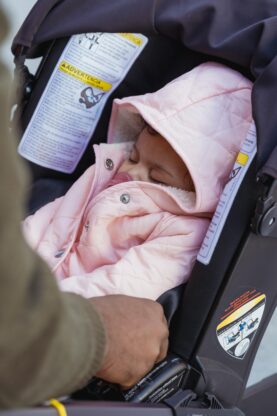Table of Contents
Establishing a Safe Environment
Creating a safe environment is the first and foremost responsibility of a babysitter. Here are some key guidelines to follow
Babysitting Location: Familiarize yourself with the layout of the house or apartment where you will be babysitting. Identify potential hazards such as sharp edges, stairs, unlocked cabinets, and unstable furniture. Prevent access to dangerous areas such as the kitchen, laundry room, or swimming pool, and ensure that all doors leading outside are locked or secured.
Childproofing: Ensure that all electrical outlets are covered with safety plugs and that cords from blinds or curtains are out of children’s reach. Lock up cleaning supplies, medications, and other toxic substances securely. Remove small objects, balloons, and plastic bags that pose choking hazards.
Fire Safety: It is crucial to know the location of fire extinguishers and fire exits in the house. Discuss with the parents a fire evacuation plan and practice it with the children. Regularly check that smoke alarms are functioning properly and change batteries if needed.
On-Demand Childcare in Your Neighborhood
Book a Sitter
Supervision and Vigilance
As a babysitter, the safety of the children in your care depends on your constant attention and supervision. Here are some key points to remember
Never Leave Children Unattended: Never leave children alone, even for a short period. Always keep them within sight and hearing range to respond promptly to their needs or in case of an emergency.
Pool Safety: If you are babysitting in a house with a swimming pool, ensure that it is adequately fenced and gated. Never allow children to swim unsupervised or leave them alone near water, even in shallow areas like bathtubs. Stay within arm’s reach of young children when they are in or around water.
Outdoor Safety: When taking children outside, ensure that the play area is safe and secure. Inspect outdoor equipment such as swings, slides, and trampolines for any signs of damage or wear. Teach children how to play safely and avoid rough activities that can lead to falls or injuries.
Basic First Aid Knowledge
Knowing basic first aid techniques can be crucial in case of accidents or emergencies. While it is always recommended to have formal first aid training, here are some essential skills to acquire

CPR and Choking: Learn how to perform cardiopulmonary resuscitation (CPR) and the Heimlich maneuver for choking emergencies. These skills can potentially save a child’s life and should be refreshed regularly.
Cuts and Scrapes: Familiarize yourself with proper wound care techniques, such as cleaning cuts with mild soap and water, applying antiseptic ointment, and dressing them with sterile bandages.
Allergies and Medications: Obtain information from the parents about any known allergies or medical conditions the child may have. Be aware of the location and proper usage of medications such as epinephrine auto-injectors (EpiPens) in case of allergic reactions.
Emergencies and Emergency Contacts
Preparation is key when it comes to dealing with emergencies. Take the following steps to ensure you are ready to handle any unforeseen situations
Emergency Contacts: Always have a list of emergency contact numbers with you, including the parents’ contact information, a neighbor, and the child’s pediatrician. Make sure you have a fully charged mobile phone or access to a landline during your babysitting hours.
Knowing the Address: Memorize or have the address of the house where you are babysitting written down. In case of an emergency, you will need to provide this information to emergency services.
Safety Drills: Discuss with the parents the best course of action in case of emergencies such as natural disasters or intruders.
Practice safety drills with the children, ensuring they are aware of what to do in these situations.
Safe Playtime and Sleeping Practices
Playtime and sleep are critical aspects of a child’s routine. By implementing safe practices during these periods, you can greatly minimize potential hazards. Consider the following
Appropriate Toys: Choose toys that are age-appropriate and free from small parts that can be choking hazards. Ensure that toys are in good condition, without broken parts or sharp edges.
Safe Sleep Environment: Follow safe sleeping practices to reduce the risk of sudden infant death syndrome (SIDS). Put infants to sleep on their backs, on a firm mattress, in a crib or bassinet free of pillows, blankets, or stuffed animals.
Sun Protection: When playing outside, ensure children are protected from harmful UV rays. Apply sunscreen with at least SPF 30, provide shade, and encourage children to wear hats and suitable clothing.
In conclusion, babysitting carries a great responsibility to keep children safe from harm. By following these top 10 safety measures, you can provide a secure environment and maintain a high level of vigilance. Remember, preparation and awareness are key to ensuring that children under your care are protected in any situation.










